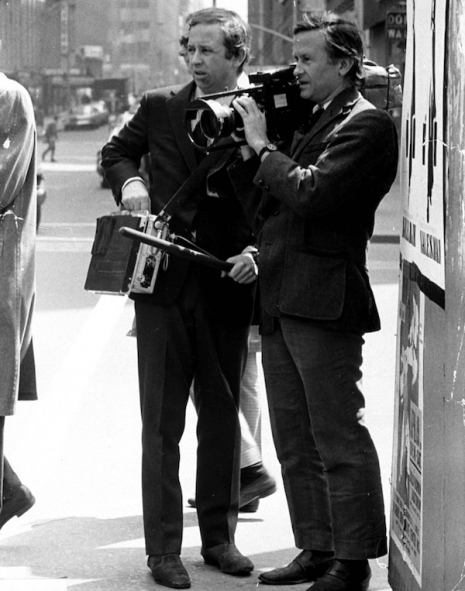
It Takes a Little More Courage is the title and opening line to a brief, all too brief, conversation with documentarian Albert Maysles (1926-2015) filmed by Alfonso Nogueroles in 2012
The gravel-voiced Maysles (pronounced May-zuls) quickly riffed on his work with brother David (1931-87) and discussed what it is needed to make a good documentary—stories.
The Maysles brothers pioneered a brand of documentary-making called Direct Cinema in which they allowed the film’s subjects to speak freely, directly, for themselves without any questions or commentary. The main inspiration for their style of filmmaking came from a rather unlikely source—Truman Capote’s non-fiction novel In Cold Blood. This book led the Maysles to “experiment in film the way Capote had experimented in literature,” or as Albert Maysles later described it:
Making a film isn’t finding the answer to a question; it’s trying to capture life as it is.
Both brothers studied psychology at Boston University and after graduating Albert went onto document psychiatric conditions in Russia, while David moved into working in Hollywood as a production assistant. David grew “disenchanted” with conventional film-making and together with Albert the brothers began making their own documentary films with David on sound and Albert on camera. Their first works together were Russian Close-Up (although only credited to Albert Maysles) and Youth in Poland. Then in 1960, the brothers joined photojournalist Robert Drew’s film company where they worked on projects alongside the likes of Richard Leacock and D. A. Pennebaker. After filming Truman Capote for the launch of his novelized work of non-fiction In Cold Blood (1966), the brothers decided to approach filmmaking in the same way Capote had documented the quadruple murder of the Clutter family in Holcomb, Kansas, in 1959 by Richard “Dick” Hickock and Perry Smith, and detailed their subsequent trial and execution. Taking Capote’s book as their inspiration, the Maysles went onto create a new kind of revelatory documentary where the story seemingly developed organically. Their works included a look at the business of door-to-door Bible salesmen, Salesman (1969), the Rolling Stones’ fateful appearance at Altamont Gimme Shelter (1970), and the lives of two reclusive upper middle class women, a mother and daughter, who lived together on a derelict estate Grey Gardens (1976). Each of these films changed the way filmmakers thought about and made documentaries.
Nogueroles’s short film It Takes a Little More Courage is a bit like a student project and leaves you wondering how much interview was shot and how much was was edited out. On the up side, it leaves you wanting to go back and watch some of those old Maysles’ masterworks.
Previously on Dangerous Minds:
‘Death Is Their Destiny’: Home-movies of London punks 1978-81
‘Psychiatry in Russia’: Albert Maysles’ first documentary, 1955
William Burroughs’ cold-blooded letter to Truman Capote






